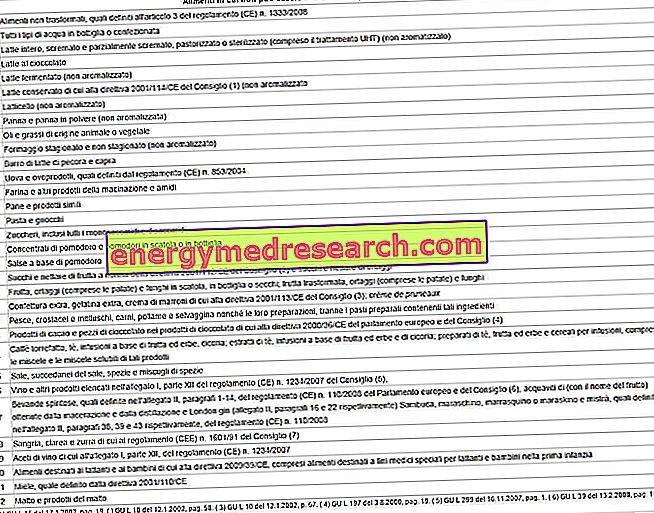Generality
Naloxone is a drug of synthetic origin that is a pure antagonist of opioid receptors μ. Thanks to this characteristic, naloxone is used as an antidote in the case of opioid overdose (such as morphine, heroin, methadone, pentazocine, codeine, etc.).

Naloxone - Chemical Structure
It is available in pharmaceutical formulations suitable for oral administration for adults and children.
Examples of medicinal specialties containing Naloxone
- Narcan ®
- Suboxone ® (in combination with buprenorphine).
- Targin ® (in association with oxycodone).
Indications
For what it uses
Naloxone is indicated as an antidote in cases of opioid overdose (overdose). The drug can also be used in the treatment of drug-induced post-operative depression.
Furthermore, naloxone is used to treat respiratory depression in newborns whose mothers took opioids before giving birth.
Warnings
As mentioned, naloxone can be used for the treatment of respiratory depression that occurs in newborns whose mothers took opioids in the four hours before delivery. However, naloxone is not effective in treating non-opioid-induced respiratory depression. Furthermore, the use of naloxone is not recommended in newborns whose mothers are drug addicts, as this drug can induce seizures and worsen the withdrawal crisis in unborn children.
Due to the side effects that may occur, naloxone should be administered with caution in the following cases:
- In patients with an opioid addiction, since an immediate withdrawal syndrome can occur after the use of the drug;
- In patients who have experienced laryngospasm or other respiratory problems in the hours before the administration of the same naloxone;
- In patients suffering from cardiovascular diseases;
- In patients already on therapy with drugs that can cause cardiac toxicity.
After administration of naloxone, patients should be kept under close surveillance, in order to identify in a timely manner the possible reappearance of symptoms of opioid intoxication.
Alcohol can decrease the speed of action of naloxone, therefore, its intake should be avoided.
Interactions
A lot of caution should be used when administering naloxone in patients taking buprenorphine (an opioid analgesic) or clonidine (an antihypertensive drug).
However, it is still a good idea to inform your doctor if you are taking - or have recently been - any type of medication, including prescription-free medicines and herbal and homeopathic products.
Side effects
Like any other drug, naloxone can also cause side effects, although not all patients experience them. This depends on the sensitivity that each individual has towards the drug. Therefore, it is not said that the adverse effects occur all with the same intensity in each person.
Listed below are the main side effects that may occur following the use of naloxone.
Gastrointestinal disorders
Naloxone can cause disorders such as nausea, vomiting and diarrhea.
Nervous system disorders
After taking naloxone, headaches, dizziness, paraesthesia, convulsions and memory disorders may occur.
Cardiovascular disorders
After administration of naloxone, the following may occur:
- Hypotension or hypertension;
- Tachycardia;
- Fibrillation;
- Hot flashes.
Other side effects
Other side effects that may occur following naloxone intake are:
- Allergic reactions in sensitive individuals;
- Sweating;
- Dry mouth;
- Erythema multiforme;
- Pulmonary edema;
- Increased growth hormone levels;
- Breathing difficulties;
- Difficulty swallowing;
- urination;
- Pain after surgery, as naloxone can decrease the analgesic effect of opioid painkillers;
- Irritation and inflammation at the injection site.
Action mechanism
Naloxone is able to counteract the symptoms induced by opioid drug overdose due to its antagonistic activity against opioid μ receptors.
The typical symptoms of opioid overdose are:
- Respiratory depression;
- Miosi;
- Hypotension;
- bradycardia;
- Coma alert or deep coma.
However, for the treatment of the aforementioned symptoms - together with the administration of naloxone - all the necessary support therapies must be started, such as the restoration of the respiratory functions, the cardiac massage and the administration of vasopressors (drugs capable of causing a vasoconstriction of the vessels blood vessels and increase blood pressure).
Mode of Use - Posology
Naloxone is available for parenteral administration as a solution for injection and should only be administered by specialized personnel.
Following are some indications on the doses of naloxone usually used.
Treatment of opioid overdose
For the treatment of opioid overdose, the usual naloxone dose is 0.4 mg, to be administered intravenously, subcutaneously or intramuscularly. If necessary, the administration can be repeated.
In cases of emergency, generally, it is preferred to administer the drug intravenously, since in this way a more rapid onset of action is obtained.
Treatment of drug-induced post-operative depression
For the treatment of drug-induced post-operative depression, the dose of naloxone usually used is 0.1-0.2 mg, to be administered intravenously every 2-3 minutes until the symptoms improve.
Treatment of respiratory depression in newborns
To treat respiratory depression in newborns whose mothers took opioid substances before giving birth, the dose of naloxone usually used is 0.01 mg / kg of body weight, to be administered intramuscularly, subcutaneously or intravenously.
Pregnancy and breastfeeding
Naloxone should be used during pregnancy only if the doctor considers it absolutely necessary.
Furthermore, after taking naloxone, it is recommended not to breast-feed for at least 24 hours after the drug is given.
Contraindications
The use of naloxone is contraindicated in patients with known hypersensitivity to the same naloxone.



